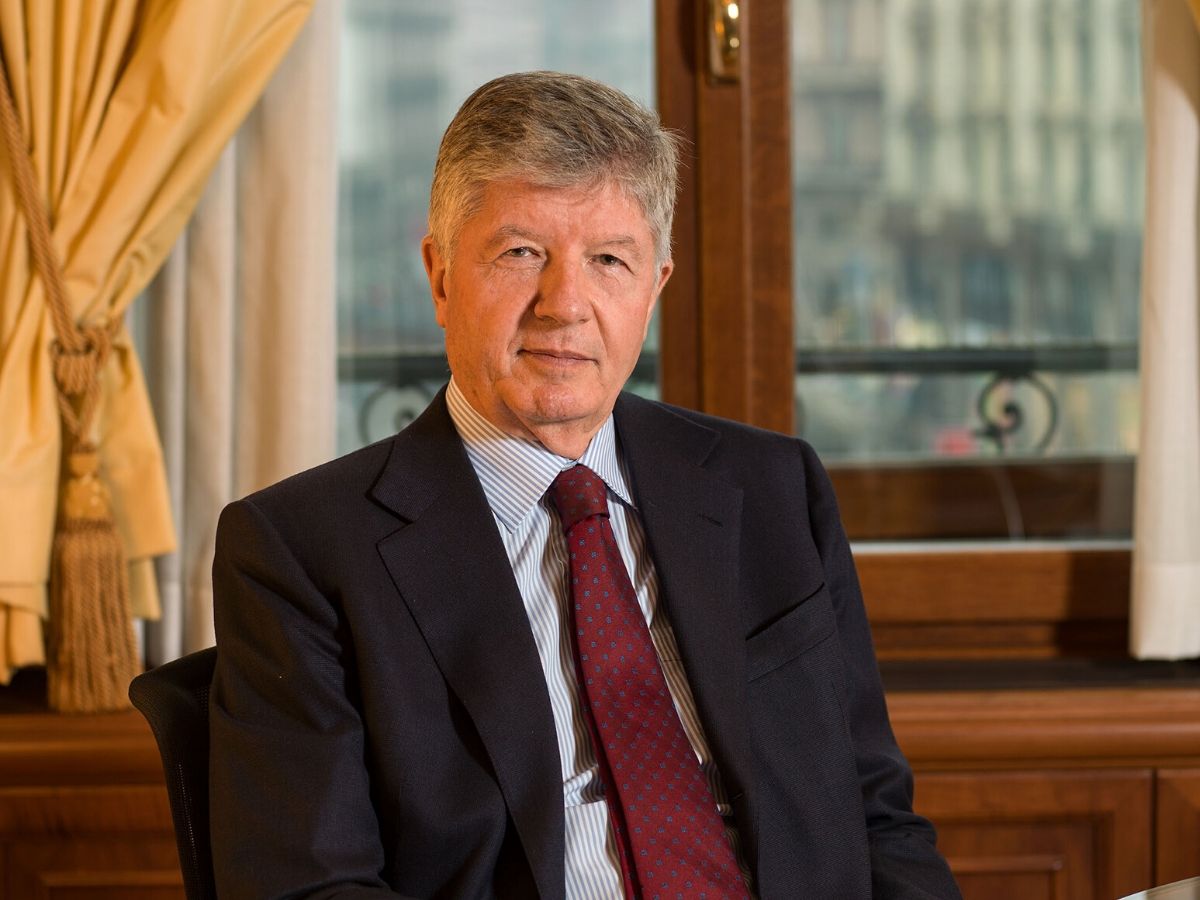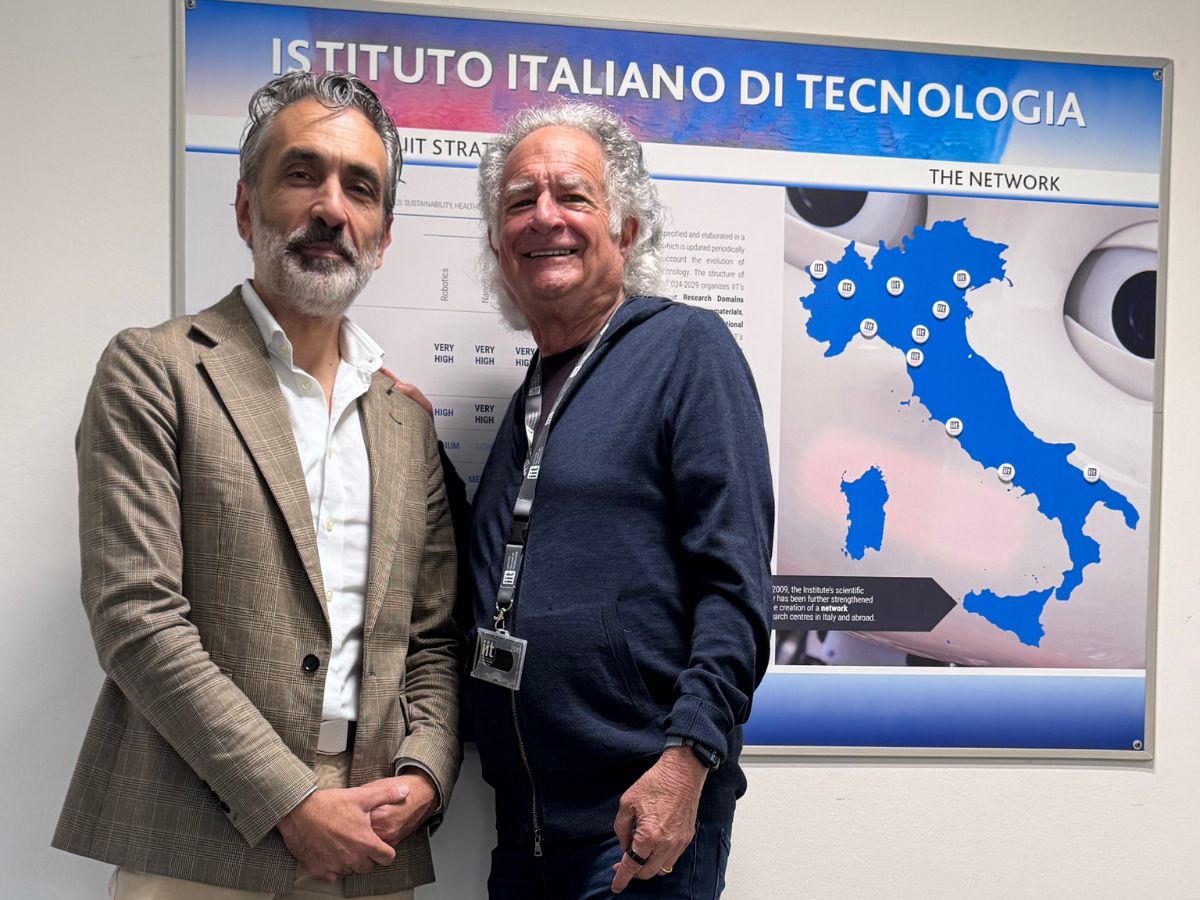Interview with Gabriele Galateri di Genola, President of the Istituto Italiano di Tecnologia
From the fortieth floor of the Generali Tower in Milan, you have a commanding view of the city. Here we meet Gabriele Galateri di Genola, the President of the Istituto Italiano di Tecnologia and President of the Generali Foundation, after having served for eleven years as the president of Generali the country’s leading insurance group and one of the largest in the world. From up here, one gains a concrete perception of what change means, which finds its most evident testament in the futuristic architecture of this part of the city, but also prompts broader reflection. We are observing a changing country. And that is the topic we discuss—the connection between this idea of renewal, evolution, Genoa, and the IIT.
As always at this time, we are working on the preparation of the previous year’s financial statements. The results of the Istituto Italiano di Tecnologia in 2022 are very positive, and we will discuss them shortly. But this meeting with Dr. Galateri is also an opportunity to revisit his past in the industrial world, particularly his time at FIAT under lawyer Agnelli, whose passing twenty years ago was recently commemorated.
President, when did your professional relationship with FIAT begin?
After working for a while at Banco di Roma, I became the financial director of Saint Gobain, first in Milan and then in Paris. It was in that year, 1977, that Cesare Romiti, the CEO, and Francesco Paolo Mattioli, the financial director of Fiat, offered me the position of financial head for North, Central, and South America. That marked the beginning of my long collaboration with the Group, which would later lead me to become the head of international finance and then the CFO of Fiat. I then left that position to continue working in finance for various Fiat companies and the controlling holdings IFI and IFIL. So, I worked for twenty-five years in the Group, closely involved with the major shareholders, lawyer Agnelli and his brother Umberto.
Returning to your professional relationship with the Group and, therefore, with lawyer Agnelli and Cesare Romiti, what were the strategic and operational directions you shared with them?
Those were very important years for the Group’s growth, and I had the opportunity, as I mentioned earlier, to take care of the international expansion from a financial standpoint. This was a fundamental objective for the Group’s leadership. The area I was responsible for was South America—Argentina, Brazil, Colombia, and Venezuela. It was decided to build a plant in Brazil, where we did not have a presence. That plant still ensures the Group, now Stellantis, a prominent commercial presence. It was a colossal undertaking that required significant financing and a decade-long commitment. Then the results came.
But while projects abroad were progressing positively, we were going through a turbulent period in Italy.
Yes, it’s hard to forget that period, caught between the danger of terrorism and internal tensions that often led to the occupation of plants and offices. It was not uncommon to meet international finance representatives in a bar on Corso Marconi in Turin. Even today, I wonder how the credibility of FIAT was maintained during those times. The answer, I believe, lies in the solidity of the group and the credibility of its shareholders, first and foremost lawyer Agnelli, who enjoyed enormous international prestige, as well as Umberto Agnelli and all the shareholders of that time. It was a long, dangerous, and exhausting period, where I was always supported by the determination and vision of lawyer Agnelli and Cesare Romiti. Despite these tensions, the Group continued its international expansion and diversified its activities beyond the automotive sector to include medical, railway, and aerospace sectors.
During those years, you were able to appreciate an aspect of lawyer Agnelli’s multifaceted personality that is often overlooked: his entrepreneurial and managerial commitment.
The complexity and value of lawyer Agnelli’s personality were evident in the synthesis of the various characteristics, attitudes, and competencies of Fiat’s leaders. Lawyer Agnelli enjoyed international credibility and respect from representatives of our institutions. Cesare Romiti, with his precise and practical operational vision, ensured effective management processes, while Mattioli offered innovative solutions in the financial area. Alongside them, the heads of various operational sectors provided strength and prospects for the Group. The original and incomparable value of lawyer Agnelli’s management was his ability to select a group of highly valuable managers, who were the protagonists of an exciting period. But times were changing. In South America, for example, rampant inflation threatened to jeopardize billion-dollar investments.
Speaking of major changes, there was a lot of talk in those years, specifically in 1976, about the entry of the Libyan state through the LAFICO fund into Fiat’s capital. Did you manage that operation?
No, I was involved in managing the exit of the Libyans from the Group’s capital. I certainly met with the Libyan advisors overseeing the operation, and I particularly remember Abdullah Saudi, a very brilliant manager whom I dealt with because I had been appointed CEO of IFIL, a company that held stakes in FIAT, Rinascente, Toro, and Primegest funds. These holdings had to be sold to FIAT to raise funds and repurchase the Libyans’ shares. At the beginning of this activity at IFIL, I found myself with a portfolio of Fiat shares and little cash. Together with President Umberto Agnelli, I worked on the relaunch of the company, entering new industrial sectors in the food industry, such as Galbani, Star, Peroni, the hotel sector with Accor, and returning to invest in Rinascente alongside Auchan in the large-scale retail sector.
Your involvement in IFIL, known as the Agnelli family’s safe, was a crucial step in the financial recovery of the Group. It demonstrated the great trust the shareholders had in the company.
That’s true. Through diversifying investments, we were able to provide greater stability to the income statement and bring reassurance to Fiat Group shareholders and the market, which was the objective of that operation.
Then you became President of Mediobanca.
When I took on that role, the bank was coming out of a rather troubled phase of conflicts between shareholders and top management. But thanks to the commitment of two excellent managers at the time, the General Manager and Co-General Manager, Alberto Nagel and Renato Pagliaro, who are now respectively CEO and President of the bank, Mediobanca, while maintaining its customer-centric approach and expanding its scope, continued to achieve remarkable results. Even during my presidency at Mediobanca, I realized how the relationships and contacts with international figures in the finance and industry world, such as lawyer Agnelli and Fiat, were instrumental in promoting the bank’s development, supporting Italian companies both domestically and internationally.
What remains today, in terms of entrepreneurship and management, from the history of FIAT, lawyer Agnelli, and which influence did they have in building a model of governance and relationships?
It is undeniable that Italy is a profoundly changed country today, despite the difficulties, compared to just thirty years ago. It is equally evident that this is due to the work of several individuals who have supported the path of a modern nation integrated into the international context with credibility, tenacity, and vision. Today, if I have to identify a personality who, like lawyer Agnelli, pursued these objectives with determination and employed a management and communication style suitable for his role, I think of Mario Draghi. At the highest institutional level, we cannot overlook the consistency and absolute commitment to supporting our country in every context by our Presidents of the Republic, currently Mattarella, and previously Napolitano. Returning to FIAT and the legacy of lawyer Agnelli, it is necessary to consider how the industrial culture of that group influenced entire generations of entrepreneurs—individuals who may be less media-friendly than lawyer Agnelli but equally relevant in terms of their contribution to the country’s development, both in terms of production and commerce and their support for innovators and research.
I have proof of this at IIT, where the essential activity of technology transfer is supported by companies that share industrial paths stemming from research. As the President of the Foundation, I have the opportunity to ensure excellent governance, develop a plan for national and international relations, and continue involving industrial leaders to secure IIT’s deserving future growth. Thus, even today, beyond all memories, I can testify to the values of the fundamental experience I had the privilege to develop within the Fiat Group, with lawyer Agnelli and with many valuable managers.





